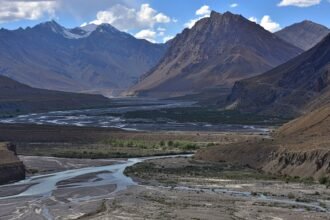New Delhi: The Permanent Delegation of India to UNESCO, Paris, has officially announced that seven natural sites from India have been added to the Tentative List of UNESCO’s World Heritage Convention. The announcement was shared through an official press release and UNESCO’s social media handle.
The Seven Newly Added Sites
- Deccan Traps (Maharashtra) – Ancient volcanic formations at Panchgani and Mahabaleshwar, narrating Earth’s geological history.
- St. Mary’s Island Cluster (Karnataka) – Famous for rare hexagonal basaltic rock structures in Udupi.
- Meghalayan Age Caves (Meghalaya) – Subterranean wonders of East Khasi Hills marking a distinct epoch in Earth’s past.
- Naga Hill Ophiolite (Nagaland) – Geological treasure at Kiphire revealing oceanic crust fragments.
- Erra Matti Dibbalu (Andhra Pradesh) – Fragile red sand dunes near Visakhapatnam, under ecological stress.
- Tirumala Hills (Andhra Pradesh) – Natural heritage of the sacred Tirupati region where spirituality meets geology.
- Varkala Cliff (Kerala) – India’s only cliff formation alongside the Arabian Sea, with rich cultural significance.
Strengthening India’s UNESCO Profile
With these additions, India’s Tentative World Heritage List now stands at 69 sites — 49 cultural, 17 natural, and 3 mixed. Being placed on the tentative list is a mandatory step before final inscription as a World Heritage Site.
The inclusion of these natural sites highlights India’s commitment to preserving geological and ecological treasures alongside cultural monuments. Experts note that global recognition can boost conservation and responsible tourism, but also brings the responsibility of protecting fragile ecosystems.
A Step Towards Global Recognition
India’s latest additions reflect not just natural beauty, but also scientific and cultural significance. From the volcanic legacy of the Deccan Traps to the spiritual resonance of Tirumala and Varkala, these landscapes showcase the country’s unique position as a custodian of heritage that bridges nature, culture, and faith.


















